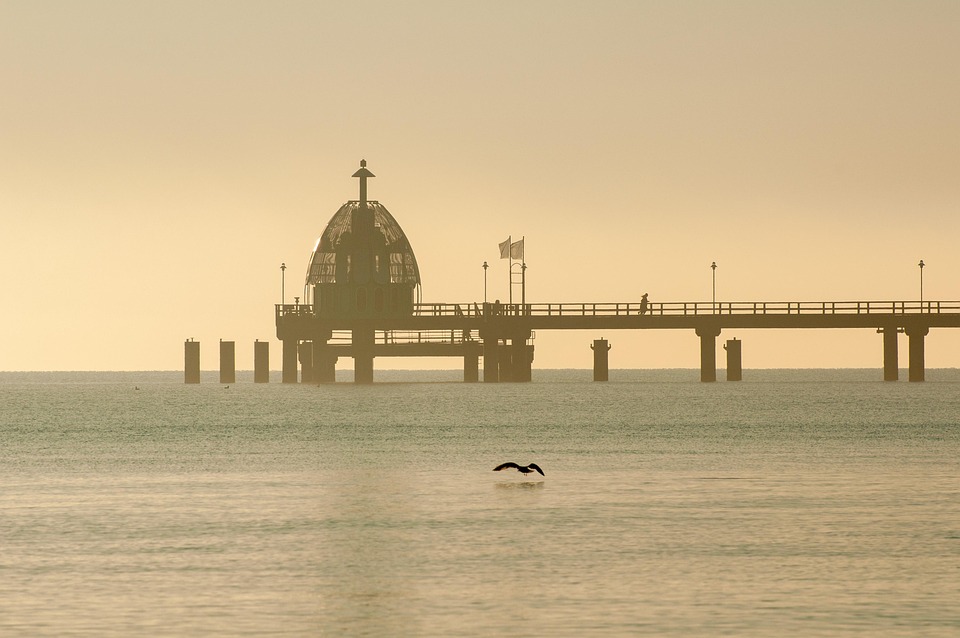The Future of Urban Living: Innovations in Capital Cities
Introduction
As urbanization accelerates, cities are becoming more than just places to live; they are evolving into dynamic ecosystems that integrate technology, sustainability, and community engagement. The concept of urban living is being redefined through innovations that address the challenges of climate change, population density, and social inequities. This article explores various innovations in capital cities around the world that are shaping the future of urban life.
The Urban Landscape: Adapting to Change
Smart Cities
At the forefront of modern urban development is the concept of "smart cities," which leverage technology to enhance the quality of life for their residents. Cities like Singapore and Barcelona have implemented smart technologies to manage resources more effectively. These include IoT (Internet of Things) devices that monitor traffic patterns and air quality, helping to inform urban planning decisions and improve public health outcomes.
Example: Singapore
Singapore’s Smart Nation initiative exemplifies how technology is integrated into urban living. The city-state employs a variety of technologies, such as smart traffic lights that adapt to real-time conditions and app-based platforms that provide citizens with information on public transportation and energy consumption. These innovations allow for a more connected urban experience, significantly reducing congestion and promoting sustainable living.[1]
Sustainable Architecture
Sustainability is another crucial aspect of urban innovations. Architectural firms are increasingly prioritizing eco-friendly designs that minimize energy consumption and waste. Cities like Copenhagen are pioneers in this area, investing in sustainable buildings that utilize renewable energy sources, green roofs, and advanced waste recycling systems.
Example: Copenhagen
Copenhagen aims to become the world’s first carbon-neutral city by 2025. The city has introduced several measures, including bike lanes, energy-efficient buildings, and waste-to-energy plants. The result is a cleaner urban environment that encourages cycling and public transportation as preferable modes of transport, while simultaneously reducing carbon footprints.[2]
Green Spaces
Urban areas are often perceived as concrete jungles, but there’s a growing recognition of the importance of green spaces in enhancing the quality of urban life. Cities are incorporating parks, community gardens, and green belts to improve air quality and provide recreational areas for inhabitants.
Example: Melbourne
Melbourne has made significant investments in its park systems, creating a network of green public spaces that promote community interaction and outdoor activities. These spaces not only serve as lungs for the city but also enhance biodiversity and contribute to mental well-being.[3]
Transportation Innovations
Public Transportation Systems
Efficient and accessible public transportation is vital for any modern city. Innovations in transportation design, such as autonomous public transit, are being explored in cities around the world. For instance, Estonia’s capital, Tallinn, has implemented a free public transportation system that encourages residents to use buses and trams, helping reduce vehicle emissions.
Example: Tallinn
Tallinn became the first capital city to offer free public transport for its residents in 2013. This policy has led to an increase in public transport usage and a subsequent drop in private vehicle ownership, contributing to lower emissions and traffic congestion.[4]
Electric Mobility
The shift towards electric vehicles (EVs) is not just a trend but a necessity for sustainable urban living. Cities are investing in EV charging infrastructure and implementing policies to encourage the adoption of electric public transport.
Example: Amsterdam
Amsterdam is known for its commitment to clean transportation. The city has a comprehensive network of electric buses and trams, and local policies encourage the use of bicycles and electric scooters, drastically reducing urban pollution levels.[5]
Micro-Mobility Solutions
With the rise of ride-sharing and bike-sharing services, micro-mobility solutions have become popular in urban areas. Cities are adapting their infrastructure to accommodate these options, making it easier for residents to navigate without relying on cars.
Example: Paris
Paris has embraced micro-mobility by implementing bike-sharing programs and designated bike lanes, which have become integral to the city’s transport system. This aligns with the city’s broader strategy to reduce reliance on cars and promote walking and cycling as primary modes of transport.[6]
Technology and Community Engagement
Citizen Participation
Innovations in urban living are not just about technology and infrastructure; they also hinge on community engagement. Cities like Helsinki are utilizing digital platforms to involve citizens in the decision-making process, promoting transparency and inclusivity.
Example: Helsinki
Helsinki participates in participatory urban planning through platforms where residents can voice their concerns and suggestions for community improvement projects. This model fosters a sense of ownership among residents, making it easier to implement successful urban initiatives.[7]
Social Media and Urban Connectivity
Social media platforms have become tools for urban connections, enabling residents to organize events, share resources, and engage in local governance. Capital cities are harnessing these platforms to create more cohesive communities.
Example: Ottawa
In Canada’s capital, Ottawa, local government departments use social media to disseminate information and receive feedback on city services. This two-way communication has resulted in a more informed public and a more responsive government.[8]
Housing Innovations
Affordable Housing
As real estate prices soar in urban areas, the issue of affordable housing has come to the forefront. Cities are rethinking their housing policies to ensure that all residents can find suitable homes.
Example: Vienna
Vienna has long been recognized for its effective social housing policies, with nearly 60% of the city’s population living in subsidized housing. The city’s approach integrates high-quality design, access to amenities, and community services, making it a model for affordable urban living.[9]
Modular and Prefabricated Homes
In response to the housing crisis, cities are exploring innovative construction methods like modular and prefabricated housing. These solutions can expedite the building process and reduce costs, making them more accessible for low-income families.
Example: Tokyo
Tokyo has been at the forefront of adopting modular and prefabricated techniques, allowing for faster construction and more efficient use of space. This approach addresses the urgent need for housing in a city known for its high-density living.[10]
Resilience and Climate Adaptation
Disaster-Resilient Infrastructure
Cities are increasingly investing in infrastructure designed to withstand climate change-related challenges, such as flooding and extreme weather. Initiatives range from improved drainage systems to green infrastructure that absorbs rainfall.
Example: New Orleans
In the wake of Hurricane Katrina, New Orleans has implemented significant innovations involving improved levee systems, restored wetlands, and green infrastructure to enhance flood resilience. These efforts ensure that the city is better equipped to handle future climate-related events.[11]
Renewable Energy Initiatives
Cities are exploring renewable energy sources to power public buildings and infrastructure. The transition to renewable energy is often part of larger climate action plans aimed at reducing greenhouse gas emissions.
Example: San Francisco
San Francisco has committed to running on 100% renewable energy by 2030. This ambitious goal incorporates solar, wind, and hydroelectric power sources, aligning with the city’s broader sustainability and climate resilience efforts.[12]
Leveraging the Sharing Economy
Co-Housing and Shared Living
The growing trend of co-housing and shared living spaces is a response to skyrocketing housing costs and urban isolation. These innovative models promote community while providing more affordable living options.
Example: Berlin
Berlin has embraced the co-housing movement, creating spaces where residents share resources like kitchens, gardens, and communal areas. This not only reduces living expenses but also fosters community bonds and social interaction.[13]
Shared Economy Ventures
The sharing economy is reshaping how people access goods and services. Initiatives like tool-sharing libraries and co-working spaces are becoming popular in urban centers, making it easier for residents to share resources and reduce consumption.
Example: Barcelona
Barcelona has implemented various sharing economy initiatives, including co-working spaces and shared tool libraries, which cut costs and promote collaboration among residents. This not only enhances community engagement but also supports local businesses by attracting visitors and fostering collaboration.[14]
Conclusion
The innovations emerging in capital cities reflect a collective effort to redefine urban living in response to contemporary challenges. From smart technologies and sustainable practices to community engagement and equitable housing solutions, the urban landscape is evolving to meet the needs of its inhabitants.
The future of urban living is not a singular vision; rather, it is a mosaic of diverse strategies and innovations tailored to the unique challenges and opportunities of each city. As we look toward the future, it is essential to prioritize sustainability, inclusivity, and resilience to create cities that not only function effectively but also enhance the quality of life for all residents.
References
- Smart Nation Singapore, Government of Singapore.
- City of Copenhagen, "Copenhagen Climate Plan 2025."
- City of Melbourne, "Melbourne Urban Forest Strategy."
- Tallinn City Government, "Tallinn Free Public Transport."
- City of Amsterdam, "Sustainability in Amsterdam."
- City of Paris, "Plan Vélo: Cycling Plan 2019-2024."
- Helsinki City Planning, "Participatory Urban Planning."
- City of Ottawa, "Social Media Engagement Strategy."
- Wien 3420 Development, "Vienna Social Housing Model."
- Tokyo Metropolitan Government, "Tokyo’s Housing Policy."
- City of New Orleans, "Greater New Orleans Hurricane Protection System."
- San Francisco Department of the Environment, "100% Renewable Energy."
- Berlin Co-Housing Initiative, "Co-Housing in Berlin."
- Barcelona City Council, "The Sharing Economy in Barcelona."
This article seeks to illustrate the potential futures of urban living, drawing from real-world examples and established practices. The future is not just about technology; it embraces a holistic approach that incorporates community engagement, sustainability, and resilience against the pressing challenges of our time.


























Add Comment